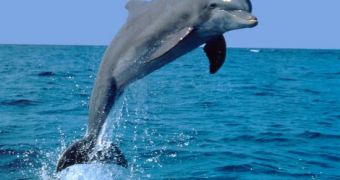Few things can be as frustrating as having a missile whiz past your head while your minding your own business. Thanks to an innovative monitoring system developed by researchers working with British defense firm QinetiQ, bottlenose dolphins swimming in Cardigan Bay, Wales no longer have to worry about such incidents.
The waters of Cardigan Bay are often used by the British Ministry of Defense to carry out military training exercises. As part of these exercises, missiles get fired on a fairly regular basis.
Dolphins might be some of the smartest marine mammals presently swimming our planet's seas and oceans, but even they have trouble keeping themselves safe whenever the military starts carrying out explosive trials.
Daily Mail reports that the Passive Acoustic Monitoring (PAM) system developed by the folks at QinetiQ takes care of this problem for them.
The system is incredibly finely tuned, and can pick up distinctive clicking sounds produced by dolphins swimming more than 20 miles (roughly 32.2 kilometers) away. It does so with the help of an underwater microphone and processing equipment.
Based on this information, the system determines whether or not a dolphin pod has entered the Abenporth range missile testing area, and alerts the military.
The latter then stop all firing, and only resume training activities after the marine mammals are no longer in harm's way.
“The development of the PAM system is an excellent example of this creativity and technical expertise being used to protect the natural resources in and around Cardigan Bay,” a spokesperson for QinetiQ told the press.
The PAM system has recently won the top environmental prize at the Ministry of Defense's annual Sanctuary Awards. According to competition judge Jane Hallett, “This project demonstrated an innovative approach to an emerging issue within marine conservation.”
Furthermore, “It shows how defense requirements can be successfully integrated with environmental responsibility.”

 14 DAY TRIAL //
14 DAY TRIAL //